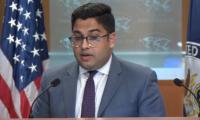The establishment of an economic corridor is a holistic strategy that ameliorates and upgrades investments in transport, energy, and telecommunications in the region.
Economic corridors lay the foundation of industrial growth and development by attracting investment and generating economic activities along the underutilized region.
Such corridors are believed to improve the transportation system and lead to poverty reduction in the long run, as they are a source of job creation and cost minimization. However, a big question mark lies as to whether this is actually true or not. In a heterogeneous population, like that of Pakistan, where there is diversity among people in terms of the location, behaviour, skills, expertise, resources, capabilities and interest towards business activities, the latter might not be the case. This is because the benefits are concentrated in the hands of a certain few – first, based on their skill set and expertise; and second, among those who are the dominating elites, in control of all the resources.
In order to gain maximum profits from economic corridors, skill development of the majority population is the key. Population polarization because of income inequality and unequal distribution of wealth, resources, technical skills and expertise, means that the rich can be involved in the exploitation of economic corridors and the main purpose of the corridors is lost somewhere in between the struggle for profit maximization.
The main ongoing economic corridor project in Pakistan, the China-Pakistan Economic Corridor or CPEC, is a collection of infrastructure projects which are currently ongoing in different regions of Pakistan. CPEC is seen as something that will bring immense profits to both the countries, and it is the biggest project in the history of Pakistan as well as all over Asia. It promises to bring industrial reforms which will boost the economic growth of Pakistan three times by the end of 2020.
The nature and expertise of people living near and away from this corridor will affect how they can maximize their profits and how they gain benefits from this. For instance, an industrial area like Faisalabad may export garments to China and other countries, Gilgit-Baltistan may export dry fruits. The north can specialize its tourism industry. But whether the benefits are shared among the population equally and proportionately can be determined by the concentrated and consistent efforts of the government of Pakistan as well as the private sector.
An argumentative, antagonistic and dilapidated approach within Pakistan which is a clear reflection of non-corporation and a series of blame game, where the provinces blame the federal government and the government complains about the lack of capacity in the provinces; or where the private sector believes it is being ignored and by-passed or a level playing field is not available to them, would definitely end up in diminished benefits to the country.
It is a shameful situation that, while importers are being encouraged and facilitated, manufacturers are being suppressed. The fact that they have to pay different taxes because of the regressive taxation system of the country makes the cost of doing business too high for them.
CPEC will not necessarily bring benefits to the regions through which it passes, and is likely to bring more development to regions that are already developed, instead of poor areas such as those of Balochistan. CPEC will likely not bring profit to the indigenous population because of the high level of competition and the struggle for profit maximization; Gwadar Port is an example of this.
For Pakistan to derive maximum benefits from CPEC, short-lived policies, quick-fixes and patch-work by the government officials and bureaucrats should be given up, and the majority of the population should be facilitated, through strategic policies that are comprehensive, well-planned and sustainable in nature and have long-term objectives.
Policy reforms and institutional arrangements which can enable Pakistan to get maximum economic benefits, minimize risks and enhance the welfare of a large segment of the population, despite the heterogeneity of population, are the need of the time. Preference should be given to local residents for employment. The training and skill improvement of Pakistani engineers working on CPEC projects must be the top agenda, along with the transfer of knowledge and project management which would ultimately lead to the enhancement of our highly skilled manpower inventory. In the long run, this will prove to be a major boom for Pakistan’s economy.
The Chinese have all the technical and mechanical skills for CPEC so they naturally get maximum profits out of it. We need to invest in our people’s skill development through education. Along with the rising interest among policymakers in appraising and prioritizing economic corridors, there should also be a burst of academic interest for empirically evaluating the socio-economic and environmental impacts of large infrastructure projects under economic corridors.
It is the job of the government to provide technical and vocational training to its citizens so that they can equally compete with the Chinese population and gain equal benefits as the elite and business class of society. Skill development leads to a higher wage rate and eventually to eradication of poverty. Along with attention to skill enhancement, a strong emphasize of the government should also be on job creation – especially for the marginalized population of the country.
It is the critical need of the time that all stakeholders follow a more concerted, cooperative and effective approach. In my view, the present atmosphere is more self-fulfilling rather than conducive.
The western route connecting Gwadar to the Karakorum Highway has the potential to open up the backward districts of Balochistan so it should be given priority. This will eventually integrate the population with the national market for goods and exchange. Educational, health, drinking water, vocational training and credit facilities should be made available to the communities living along the western corridor to improve their economic and social conditions. Careful planning should be done so that the local population benefits in employment and other services sectors.
Finally, I think it is high time that our government introduced a progressive taxation policy so that the poor are not exploited at the hands of the rich and the real essence of projects like CPEC are met and enjoyed by majority of the population not just the ruling elites.
The writer is a development economist, currently working at the Sustainable Development Policy Institute (SDPI),Islamabad.
Email: fatima@sdpi.org
A woman walks past a building of the International Monetary Fund. — AFP/FileThe annual and spring meetings of the...
Late Benazir Bhutto's daughter Asifa Bhutto Zardari addresses the Christian community in Bihar Colony on January 23,...
Representational image. — PexelsWater is an important scarce natural resource that is required for several everyday...
Pakistani employees of online marketplace company Kaymu at work in Karachi. — AFP/FileThe true spirit of development...
India uses Afghanistan as a backstage area to carry out terrorist attacks against Pakistan
Another report by the Pakistan Institute of Peace Studies states that 78 per cent of attacks have been carried out by...







